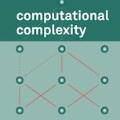The optimal scheduling of interfering links in a dense wireless network with full frequency reuse is a challenging task. The traditional method involves first estimating all the interfering channel strengths then optimizing the scheduling based on the model. This model-based method is however resource intensive and computationally hard because channel estimation is expensive in dense networks; furthermore, finding even a locally optimal solution of the resulting optimization problem may be computationally complex. This paper shows that by using a deep learning approach, it is possible to bypass the channel estimation and to schedule links efficiently based solely on the geographic locations of the transmitters and the receivers, due to the fact that in many propagation environments, the wireless channel strength is largely a function of the distance dependent path-loss. This is accomplished by unsupervised training over randomly deployed networks, and by using a novel neural network architecture that computes the geographic spatial convolutions of the interfering or interfered neighboring nodes along with subsequent multiple feedback stages to learn the optimum solution. The resulting neural network gives near-optimal performance for sum-rate maximization and is capable of generalizing to larger deployment areas and to deployments of different link densities. Moreover, to provide fairness, this paper proposes a novel scheduling approach that utilizes the sum-rate optimal scheduling algorithm over judiciously chosen subsets of links for maximizing a proportional fairness objective over the network. The proposed approach shows highly competitive and generalizable network utility maximization results.
翻译:最理想地将干扰连接安排在一个密度大且具有全频率再利用的无线网络中,这是一项艰巨的任务。传统方法首先需要对所有干扰频道的强力进行估计,然后根据模型优化时间安排。但这种基于模型的方法是资源密集和计算困难的,因为在密集的网络中,频道估计费用昂贵;此外,即使找到一个当地最佳的方法来解决由此产生的优化问题,也可能是计算上复杂的。本文表明,通过采用深层次的学习方法,可以绕过频道估计,并且仅仅根据发射机和接收机的地理位置有效地安排连接。由于在许多传播环境中,无线频道的强力主要是远距离依赖路径损失的功能。这是通过对随机部署的网络进行不受监督的培训以及使用新的神经网络结构来完成的,而这种结构可以将干扰或干扰的相邻节点的地理空间变化与随后的多个反馈阶段相匹配,以学习最佳解决方案。由此形成的神经网络可以提供接近最优化的性表现,并且能够将无线频道的强度推广到更大的部署区域和不同链接的密度损失。此外,通过对随机部署网络进行不受监督的培训,从而提出最优化地进行最佳地进行最佳的优化的排序。




